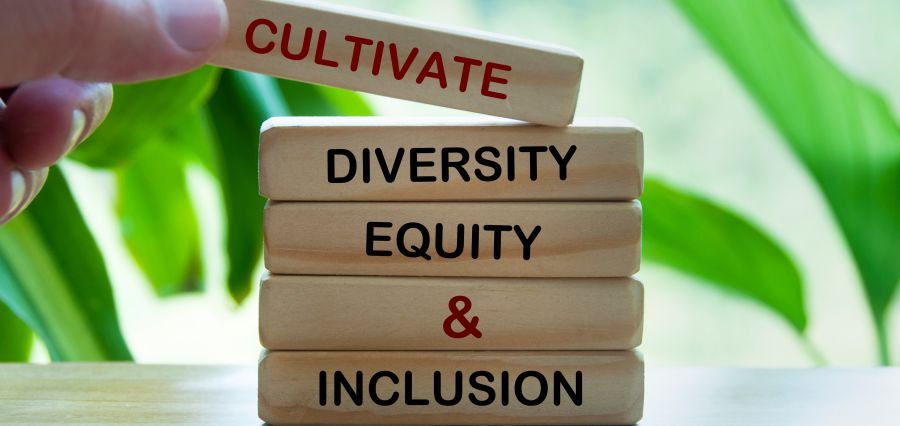Yet, for too long, organizational leadership resembled a monochromatic canvas devoid of the vibrant hues of diversity and inclusion. Today, however, a transformative shift is underway—a shift propelled by the guiding light of inclusive leadership.
Leadership is undergoing a profound transformation. Gone are the days of hierarchical structures and one-size-fits-all approaches. In their place emerges a new paradigm: inclusive leadership. At its core, inclusive leadership is not merely a buzzword or a checkbox on a corporate agenda.
It is a fundamental shift in mindset, a commitment to embracing diversity in all its forms, and a dedication to empowering every individual within a team. So, what does it take to be an inclusive leader?
How can we navigate the complexities of diversity and foster environments where every voice is heard, valued, and respected? Let’s delve into some strategies that can illuminate the path toward inclusive leadership excellence.
Cultivate Cultural Intelligence:
Inclusive leadership begins with a deep understanding of the diverse cultures, backgrounds, and perspectives within your team. Take the time to educate yourself about different customs, traditions, and communication styles. Actively seek out opportunities to engage with individuals from varied backgrounds and approach each interaction with curiosity and empathy.
Foster Psychological Safety:
Create an environment where team members feel safe to express their ideas, opinions, and concerns without fear of judgment or reprisal. Encourage open dialogue, active listening, and constructive feedback. Remember, psychological safety is the bedrock upon which trust, collaboration, and innovation thrive.
Champion Diversity at Every Level:
Inclusive leadership is not just the responsibility of those at the top; it must permeate every level of an organization. Actively recruit diverse talent, promote inclusive policies and practices, and hold leaders and team members alike accountable for fostering a culture of belonging.
Embrace Intersectionality:
Recognize that individuals embody multiple dimensions of diversity, including race, gender, age, sexual orientation, disability, and more. Embrace the intersectionality of identity and strive to create inclusive spaces that honor the unique experiences and perspectives of each person.
Lead by Example:
Your actions speak louder than words. Model inclusive behaviors in your everyday interactions, whether it’s actively soliciting input from all team members, acknowledging and addressing bias, or advocating for equitable opportunities. Be intentional about creating inclusive rituals and traditions that celebrate the richness of diversity.
Continuously Educate and Evolve:
Inclusive leadership is an ongoing journey, not a destination. Stay informed about current issues and trends related to diversity, equity, and inclusion. Invest in training and development programs that equip leaders and teams with the skills and knowledge needed to navigate complex and nuanced conversations about diversity.
Measure Progress and Adjust Course:
Establish metrics and benchmarks to assess the effectiveness of your inclusive leadership efforts. Solicit feedback from team members through surveys, focus groups, and one-on-one conversations. Use this data to identify areas for improvement and make necessary adjustments to your strategies and practices.
Create Structured Opportunities for Collaboration:
Design team structures and processes that facilitate collaboration and ensure that all team members have an equal opportunity to contribute and participate. Foster cross-functional teams and encourage diverse perspectives in decision-making processes.
Address Unconscious Bias:
Raise awareness about unconscious bias and its impact on decision-making, team dynamics, and organizational culture. Implement strategies such as bias awareness training, blind recruitment processes, and diversity mentoring programs to mitigate the effects of bias and promote fairness and equity.
Promote Flexibility and Accommodation:
Recognize that individuals have unique needs and circumstances that may require flexible work arrangements or accommodations. Be proactive in accommodating diverse needs related to caregiving responsibilities, disabilities, religious practices, and other factors, thereby fostering an inclusive and supportive work environment.
Invest in Employee Resource Groups (ERGs):
Support the formation and empowerment of employee resource groups (ERGs) that represent various affinity groups within the organization, such as LGBTQ+, women, people of color, veterans, and individuals with disabilities. ERGs provide a platform for networking, mentorship, advocacy, and community building, contributing to a more inclusive workplace culture.
Amplify Marginalized Voices:
Actively seek out and amplify the voices of individuals from marginalized or underrepresented groups within your organization. Create opportunities for these individuals to share their perspectives, experiences, and expertise in meetings, presentations, and other forums, thereby elevating their visibility and influence.
Encourage Allyship and Advocacy:
Encourage allies to actively support and advocate for marginalized colleagues by challenging discriminatory behaviors and practices, amplifying their voices, and promoting inclusive policies and initiatives. Foster a culture of allyship where individuals leverage their privilege and influence to create positive change for others.
Establish Inclusive Performance Metrics:
Develop performance metrics and evaluation criteria that account for diversity, equity, and inclusion outcomes. Incorporate measures of team diversity, inclusivity, and belonging into performance evaluations and reward systems, thereby reinforcing the importance of inclusive leadership behaviors and outcomes.





